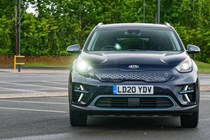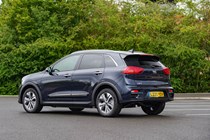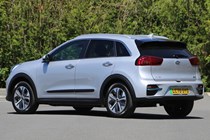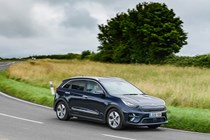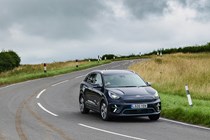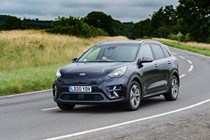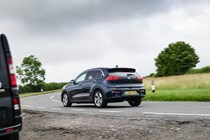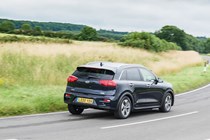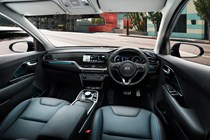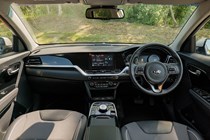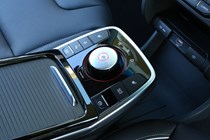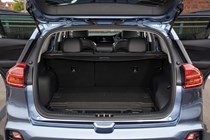Kia e-Niro SUV (2019-2022) running costs and reliability
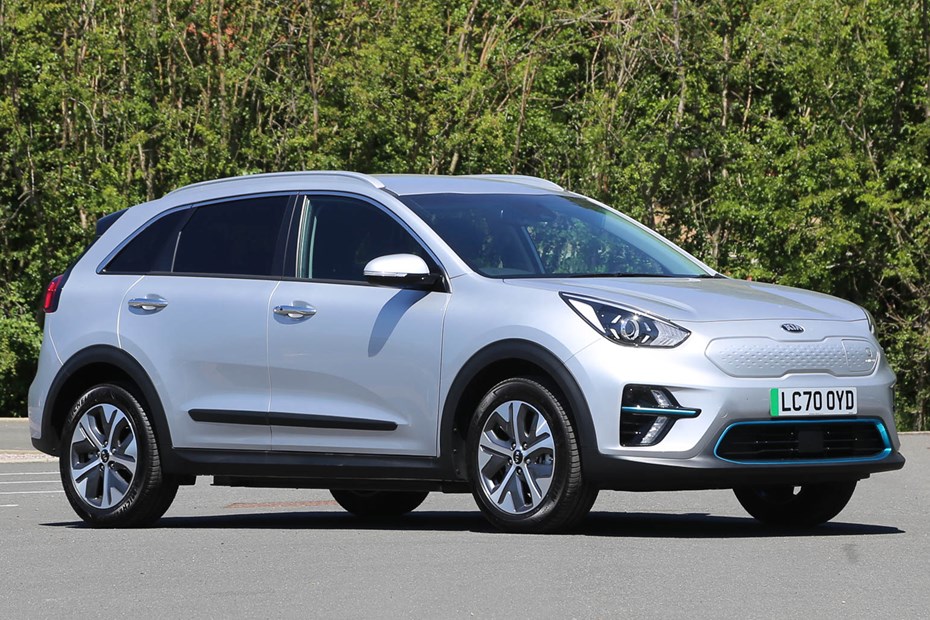
Miles per pound (mpp) ⓘ
| Electric motors, home charging | 11.5 - 12.4 mpp |
|---|---|
| Electric motors, public charging | 6.2 - 6.7 mpp |
Fuel economy ⓘ
| Electric motors | 3.9 - 4.2 miles/kWh |
|---|
- One of the longest-range electric cars around
- Large battery and efficient powertrain
- Other running costs should be minimal
How much is it going to cost to run?
As with most electric cars, day-to-day running costs for the Kia e-Niro are incredibly low. In fact, Parkers Miles per Pound data places it as the least expensive car to run – out of any. It’s capable of 6.2 - 12.4 miles for every pound of electricity, compared to 32.3mpp for the Tesla Model 3 or 26.9mpp for the Nissan Leaf.
As with any EV, rapid acceleration and prolonged high speeds will see the range tumble – stick to the motorway speed limit and you’ll be fine, but don’t expect to see anywhere close to the claimed range if you regularly head to 80+mph. Of course, being an EV, road tax is free, the e-Niro is exempt from London’s congestion charge, and servicing costs should be reasonable, too.

Range and charging
Kia claims a maximum range of 282 miles, and we’re happy to report that this number seems accurate – even if you do regular motorway trips. Certainly, you’ll be able to drive for 200 miles – that’s around four hours of continuous driving – at motorway speeds and with the heater on and still have plenty in reserve.
The facelift saw the introduction of an ‘entry-level’ model with a smaller battery – just 39kWh as opposed to 64kWh in the top model. Kia claims this version has a driving range of 180 miles.
Charging the e-Niro up is nice and straightforward, with a charge socket hidden in the car’s nose. This does mean you’ll have to forward-park at most public chargers. e-Niros come with a three-pin domestic charger for emergency top-ups, but this method is extremely slow. A full charge will take a slug-like 30 hours or 18 hours for the smaller battery, making this option viable only if no other charger is available.
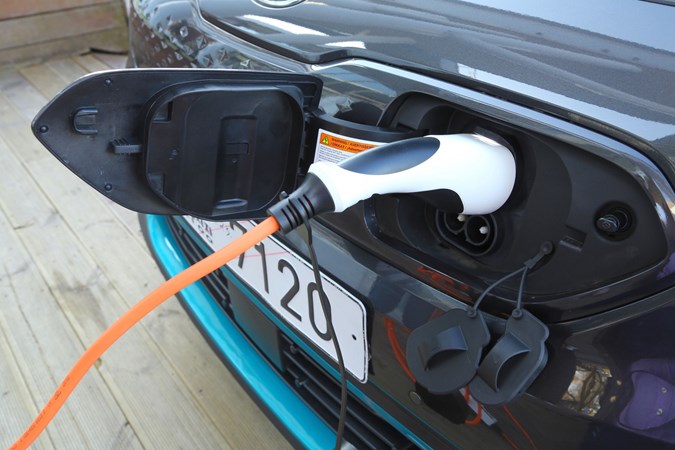
Most Kia e-Niros will be charged from a home wallbox, which can do a full charge in 10 hours – ideally, charging overnight when electricity is cheaper.
If you need to charge while out and about, a 50kW rapid charger will manage an 80% charge in around 1 hour 15 minutes. The e-Niro’s also capable of taking a 100kW charge from certain stations, which will do the same 80 per cent top up in under an hour.
Servicing and maintenance
The warranty covers the battery as well but only for failure – there’s no cover for loss of performance or capacity during that time, unlike you get with the Renault Zoe or Nissan Leaf.
Reliability
- No red flags
- EVs tend to be reliable
- Backed up by seven-year warranty
Kia’s reputation for reliability is extremely good, which is why the brand is confident enough to back all of its cars with the same seven-year, 100,000 mile warranty. There’s no reason to believe that the e-Niro will fare any differently, although it’s a relatively new car.
Electric cars have far fewer moving parts than petrol or diesel alternatives, and most of the e-Niro’s interior tech and fittings are well-proven in other Kia models, too.
Ongoing running costs
| Road tax | £195 |
|---|---|
| Insurance group | 20 - 29 |
Get an insurance quote with

|
|



